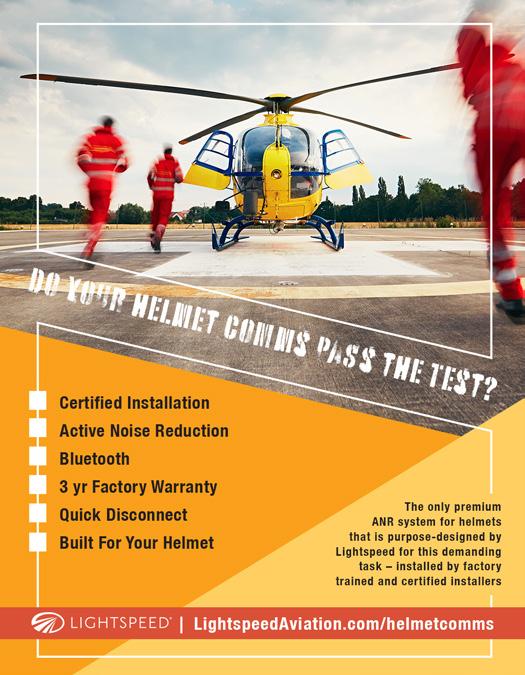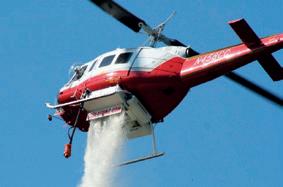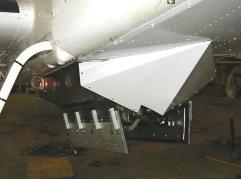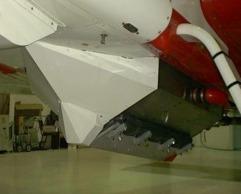
6 minute read
New Insulin-Treated Diabetes Mellitus Policy For Pilots
By Michael Berry, M.d., Federal Air Surgeon
As my office works to implement significant changes to our insulin-treated diabetes mellitus (ITDM) protocol, let me take this opportunity to provide an overview.
The advent of new technology like continuous glucose monitoring (CGM) played a role in the FAA’s new policy. Not long after the Wright Brothers first flew, the need for airman physical standards became apparent. Early U.S. Army pilot candidates included those medically disqualified for infantry or cavalry. This was unsuccessful as shown by the British during the first year of WWI: two-percent of aviation losses were due to enemy action, eightpercent to mechanical issues, and ninety-percent medical issues. Sixty-percent of the losses had physical deficits. Once medical standards were in place, the accidents secondary to medical causes dropped to twenty-percent after one year and twelve-percent the following year.
Early civilian aeromedical standards closely mirrored those of the U.S. Army. Just as today, the medical standards for commercial pilots were more rigorous than for a private pilot, which balances public safety and an individual’s freedom to fly. Through today’s Special Issuance Medical Certificate process, provisions for appropriate evaluation and risk mitigation allow us to routinely evaluate and issue for conditions that were once cause for automatic disqualification. This change is a testament to ongoing improvements in treatment and diagnostic tools.

Thanks to specific improvements in the management of ITDM and through consultation with prominent clinical specialists in diabetes, we have determined that some applicants with ITDM can now be favorably considered for either
a Class I or II medical certificate under 14 CFR part 67. As you may be aware, in 1996 one of my predecessors determined that technology had matured sufficiently to allow special issuance of medical certificates for ITDM at the Class III level. The new protocol is an option for Class III medical certificates (although they can also use the prior protocol). It has no effect on pilots using BasicMed or sport pilot privileges.
You may also know that Canada and the United Kingdom (UK) both allowed use of insulin by commercial pilots some years ago. The U.S. couldn’t follow suit right away because both countries, to mitigate risk, imposed limitations not feasible here in the United States. For instance, they limit use of the medical certificate to twopilot operations, require specific training for the non-diabetic pilot, and require informing other crewmember(s) of the ITDM condition. Recent improvements in CGM (continuous glucose monitoring) technology are sufficient that the FAA can now favorably consider special issuance for Class I and II medical certificates for some individuals without the need for these restrictions. My expectation is that our special issuance will provide a template for other International Civil Aviation Organization (ICAO) member states including Canada and the UK. We announced the new ITDM protocols via the Federal Register on November 7, 2019. We designed the protocols to ensure that the pilot remains in good control and avoids incapacitation, subtle or overt. Both low and high blood sugar (hypo- and hyperglycemia, respectively) are associated with cognitive impairment that can cause poor decision making, slowed reaction time, and an inattention to detail, among other problems. The use of CGM allows the pilot to closely monitor blood sugar irrespective of workload and ambient conditions (turbulence, emergencies, etc.) and take corrective action in all phases of flight. In addition, a predictive function allows the pilot to take action to prevent blood sugar excursions outside the desired range rather than merely reacting to them, as is the case with finger-stick blood sugar testing. We have already begun to review cases under this protocol and will grant a special issuance when it is safe to do so. This is a win for the professional pilot community and it also maintains safety in the National Airspace System.
Dr. Michael Berry received an M.D. from the University of Texas Southwestern Medical School, and a master’s in preventive medicine from Ohio State University. He is certified by the American Board of Preventive Medicine in aerospace medicine. He served as an FAA senior aviation medical examiner and vice-president of Preventive and Aerospace Medicine Consultants for 25 years before joining the FAA. He also served as both a U.S. Air Force and NASA flight surgeon.

*MENTION THIS
AD AND SAVE 10% ON YOUR
NEXT PURCHASE. *FOR A LIMITED TIME ONLY*MENTION THIS
AD ANDSAVE 10% ON YOUR NEXT PURCHASE.


*FOR A LIMITEDTIME ONLY


For over 30 years, ISOLAIR has been manufacturing industry leading helicopter systems for the firefighting, forestry and aerial application industries. With a broad line of certified and custom helicopter equipment, ISOLAIR has the system to fit your company’s needs. From agricultural spray systems and bucket spreaders to firefighting systems, forestry grapples and torches, ISOLAIR can and will do it all! For over 30 years, ISOLAIR has been manufacturingindustry leadinghelicopter systems for the firefighting, forestry and aerial application industries. With a broad line of certified and custom helicopter equipment, ISOLAIR has the system to fit your company’s needs.Fromagricultural spray systems and bucket spreaders to firefighting systems, forestry grapples and torches, ISOLAIR can With competitive pricing, quality assurance, easy to install products, and an ongoing commitment and will do it all! to customer service, we welcome you to contact us. Our friendly and knowledgeable staff is ready to With competitive pricing, qualityassurance, easy to install products, and an ongoing commitment answer your questions and help you find the ISOLAIR system that will best meet your operationalto customer service, we welcome you to contact us. Ourfriendly andknowledgeablestaff is ready to requirements. answer your questionsand help youfind the ISOLAIRsystem that will best meet youroperational requirements.
ISOLAIR HELICOPTER SYSTEMS 2410 NW BURNSIDE CT. GRESHAM, OR 97030 U.S.A. ISOLAIR HELICOPTER SYSTEMS 27600 SE HIGHWAY 212 BORING, OR 97009 U.S.A. PHONE: +1 (503) 492-2105 PHONE: +1 (503) 492-2105 FAX: +1 (503) 492-2756 FAX: +1 (503) 492-2756 EMAEmail: isolairinc@gmail.com


www.isolairinc.com www.isolairinc.com
SCAN THIS CODE WITH YOURSCAN THIS CODE WITH YOUR SMARTPHONE FOR MORE INFOSMARTPHONE FOR MORE INFO
Turbine Conversions, Ltd

The Aviation Innovation Specialists Since 1990
Fire Retardant Delivery System STC SA00961CH STC SA00-45 Canada
AKA - Hatfield Fire Gate has been successfully fighting wildfires around the world since 1998!
The reliability of the TCL Fire Gate has been proven in the field for more than 20 years. The original clam shell design which reduces pitch up after the drop and emergency “Blow Down” system makes the Hatfield Gate stand out as a leader in Single Tanker Aircraft technology. Effective drop control, pilot friendly controls & ease of maintenance make it the right choice.


Approved by
IAB (Interagency Air Tanker Board) BLM (Bureau of Land Management)

USFS (US Forest Service)
4 Level Dump Full Salvo Dump - 800 gallons in 2 only seconds!

38”, 41” and AT gate box available TurbineConversions.com TEL 616-837-9428
aerialfiremag.com | AF 45










